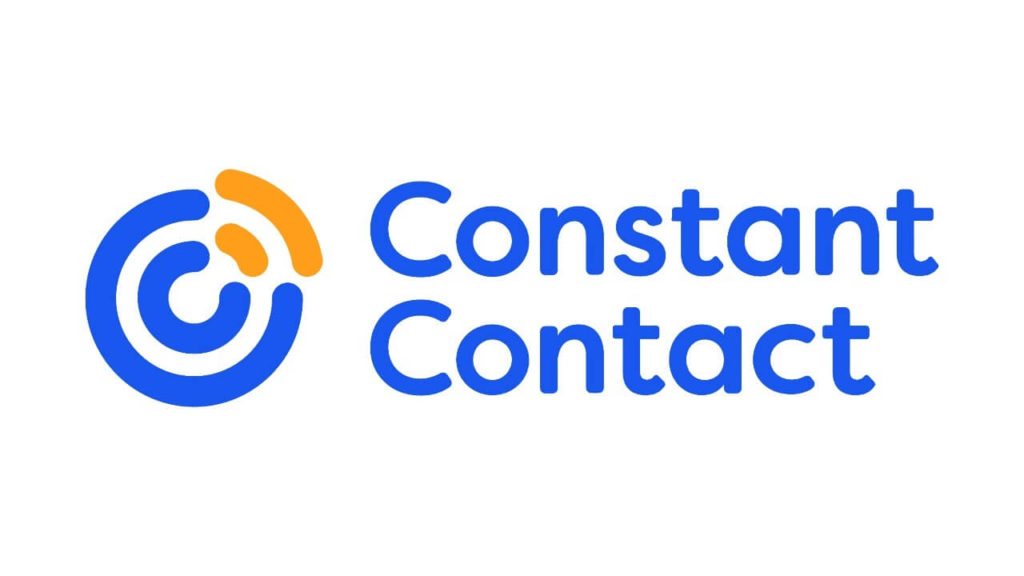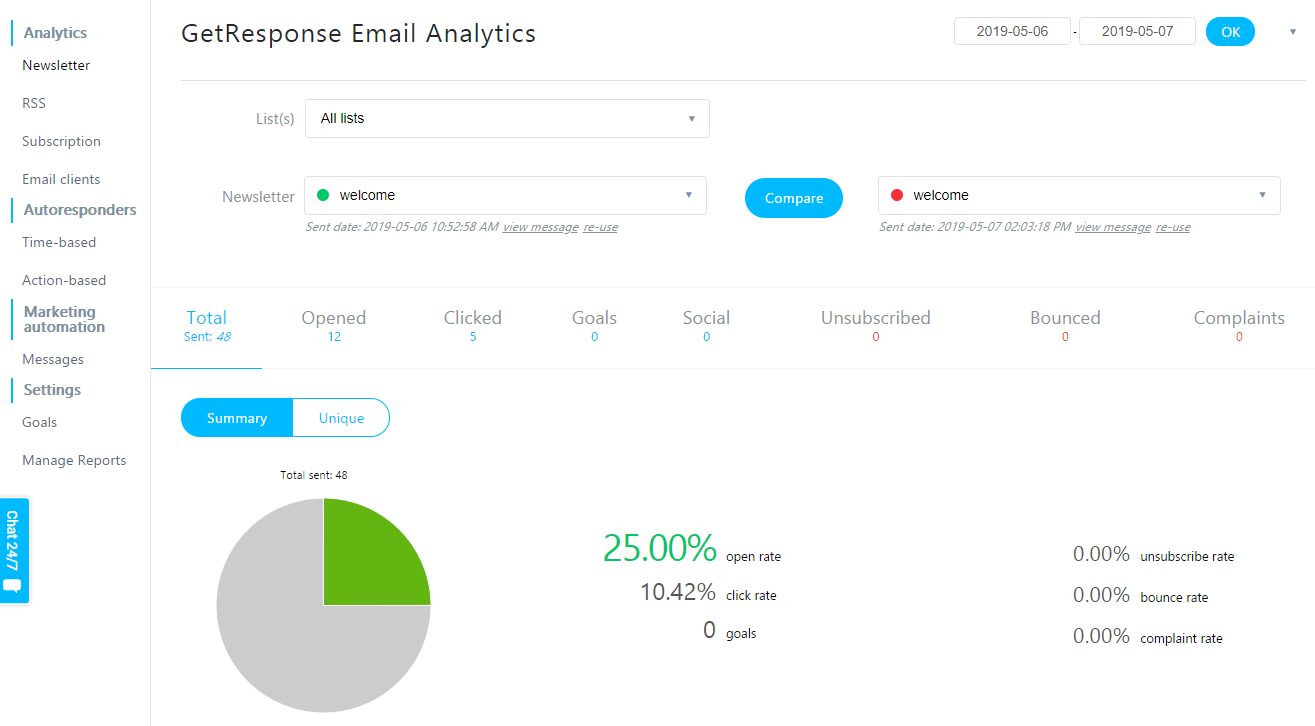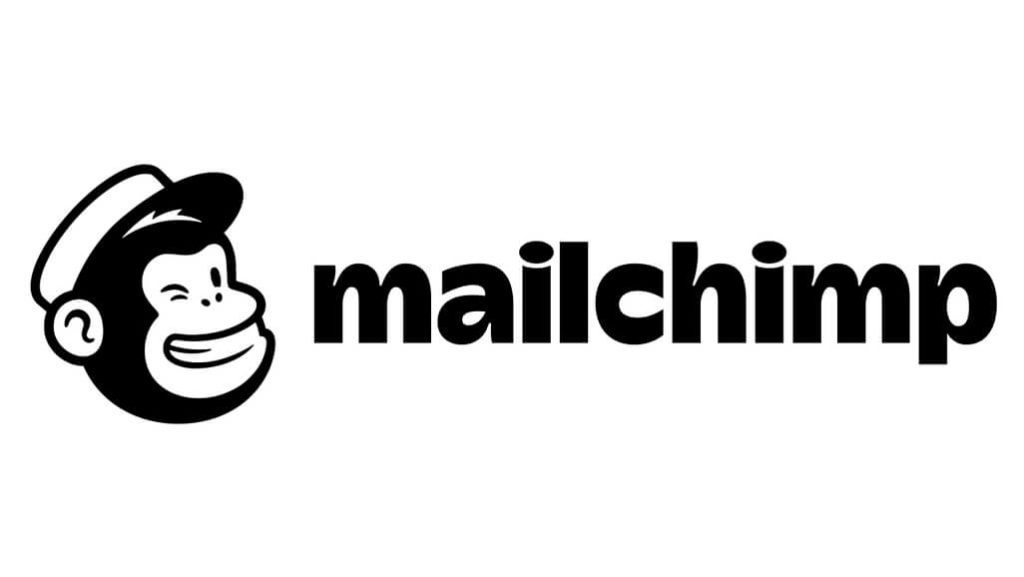Email newsletters are one of the best ways to offer value and regularly engage with your subscribers. Today, you can see them everywhere, in different forms — from basic personal letters to automated email marketing campaigns.
Regardless of how you plan your email marketing operation, you always need a reliable email marketing platform that makes it easy to send professional-looking emails to thousands of recipients.
In this blog, we’ll look at the best newsletter tools and see how they can help you increase your marketing effectiveness. So, let’s begin.
What to Look for in Email Newsletter Software?
With email marketing becoming so relevant for generating leads and driving traffic, you can hardly ignore it. But which email campaign tools should you choose to start email marketing? Here’s a small checklist to help you pick the right solution:
Key Features to Look For
- User-friendly interface. An intuitive email editor saves time and helps you create emails without a steep learning curve. Look for a solution with a beginner-friendly dashboard and drag-and-drop builder;
- Feature-richness. Look for advanced features like automation, form builder, behavioral segmentation, and analytics dashboard for best results;
- Variety of customizable templates. A wide range of templates and drag-and-drop email template editors help you create responsive emails that match your brand guidelines;
- Segmentation and personalization. Ensure that the tool lets you segment your audience and personalize emails to improve relevance and engagement;
- Integration with other tools. Search for a solution that integrates seamlessly with your CRM, social media, and other marketing tools for streamlined operations.
Factors to Consider
- Cost. Pick a tool that fits your budget, considering both upfront subscription costs, overage charges, and hidden fees, if any;
- Scalability. Ensure the tool grows with your business and is capable of handling larger lists without increasing your overall costs;
- Customer support. Responsive customer support is crucial for troubleshooting issues quickly and keeping your campaigns on track;
- Reviews and reputation. Read user reviews and research about the tool’s reputation to understand its reliability and user satisfaction;
- Trial period or free plan. A trial period or free plan lets you test all the features and utility before committing financially. So, pick one with a generous free plan.
10 Best Email Newsletter Platforms in 2024
Want an in-depth guide to the best newsletter creation platforms? We’ve compiled a list of the most popular solutions to help you with your newsletters. So, let’s have a look at the best email newsletter tools, one by one:
- Sender
- Brevo (Sendinblue)
- Convertkit
- ActiveCampaign
- Keap
- HubSpot
- Constant Contact
- GetResponse
- Adobe Campaign
- Mailchimp
Sender
Sender is a great tool if you appreciate intuitiveness and are looking for something that speeds up your newsletter-building game. It’s the best email marketing service with a powerful newsletter editor for creating responsive newsletters without coding skills.
Best for
- Small-to-medium businesses
- B2C companies
- Marketing agencies

Sender’s drag-and-drop newsletter builder makes creating emails a breeze. Pick a template, add your text, video, and images, and you’re done — no HTML or design skills needed.
You can make email content interactive using countdown timers, product blocks, review blocks, and custom fields.
Plus, the dashboard is beginner-friendly, and the support is lightning-fast when replying to your queries. So, you’re rarely left wondering how to do something.
If you’ve got an ecommerce business, use its visual automation builder to automate campaigns like abandoned cart recovery based on user activity.

Newsletter Builder Features
- Drag-and-drop editor;
- HTML editor for advanced customization;
- Pre-designed responsive templates;
- Interactive elements like countdown timer, product blocks, etc.
- Built-in image editor;
- Custom fonts and color schemes.
Core Features
- Dynamic content insertion;
- Subject line and email content personalization;
- Advanced segmentation for targeted messaging;
- Real-time analytics dashboard;
- Heat maps to track engagement within the email.
Pros & Cons
| Pros | Cons |
| Simple & human-friendly UI | No landing page builder |
| Generous free plan limits | Sender logo in the free plan |
| Free design templates & drag-and-drop builder |
Pricing & Free Plan
- Free plan for 2,500 subscribers and 15,000 emails per month;
- Paid plans start at $15 for 2,500 subscribers and 30,000 emails per month.
Brevo
Brevo, formerly called Sendinblue, is a newsletter service that offers multiple features, such as drag-and-drop builder, newsletter automation, shared inbox, and a landing page builder.
Best for
- Large email list owners
- Ecommerce stores
- Medium-sized businesses

You can store unlimited subscribers even on the free plan, but it restricts the number of emails to 300 per day.
You can create email newsletters using its drag-and-drop builder and set up signup forms. Plus, it comes with CRM features if you want to start nurturing your email newsletter subscribers.

Newsletter Builder Features
- Drag-and-drop editor;
- 40+ newsletter templates;
- AI subject line generator;
- Supports HTML designs;
- Customizable design elements.
Core Features
- Landing page and form builder;
- Audience segmentation;
- Analytics dashboard;
- Whatsapp and chatbot marketing;
- Predictive sending AI.
Pros & Cons
| Pros | Cons |
| Store unlimited contacts | Automation limited to standard use cases |
| Visual automation builder | Confusing UI |
| In-built CRM with a shared inbox | Email-only customer support on base plan |
Pricing & Free plan
- Free plan supports unlimited contacts and up to 300 emails per day;
- Paid plans start at $25 per month for up to 20,000 emails per month.
Convertkit
ConvertKit is the ultimate newsletter tool for small business owners and creators. It’s designed to help you grow your newsletter audience through features such as creator network and recommendations.
Best for
- Artists and digital nomads
- Small business owners
- Coaches and consultants

The intuitive newsletter builder makes newsletter design and creation a breeze. You can use the drag-and-drop builder or pick from available templates to create an email quickly. Though the templates are limited, if you’re a creator or influencer, they’ll work.
The free plan supports up to 1,000 subscribers, and you also get audience segmentation features. This is a low-risk option for creators, artists, and small businesses looking to launch a newsletter.

Newsletter Builder Features
- Drag-and-drop builder;
- Ready-to-use design blocks;
- Embed videos, tweets, etc. directly within emails;
- Interactive countdown timer;
- Template library.
Core Features
- Creator network for recommendations;
- Landing pages and form builder;
- Automated email funnels;
- Digital product selling dashboard;
- Analytics dashboard.
Pros & Cons
| Pros | Cons |
| Creator-centric email list growth features | Few template options |
| Intuitive form and newsletter design builder | Lack of advanced segmentation features |
| Autoresponders and schedulers |
Pricing & Free plan
- Free plan for up to 1000 subscribers with basic features;
- Paid plans start at $25 per month for 300 subscribers with more advanced features.
ActiveCampaign
ActiveCampaign combines email, automation, CRM, and social media together to give you an omnichannel solution for newsletters and other campaigns.
Best for
- Bloggers and influencers
- Small businesses
- Early-stage startups

With features like a powerful drag-and-drop builder, marketing automation capabilities, AI-based predictive sender, email segmentation, lead scoring, etc., it’s an amazing solution for startups looking to grow fast using email marketing.
You can also automate newsletters, email campaigns, transactional emails, and promotional emails for your audience using ActiveCampaign.

Newsletter Builder Features
- Drag-and-drop builder;
- AI content creation tools;
- Dynamic content fields;
- Canva integration for design;
- Readymade templates.
Core Features
- Landing page builder;
- Newsletter campaign automation;
- Audience segmentation features;
- Advanced reporting and analytics
- Integration with GA and other tools.
Pros & Cons
| Pros | Cons |
| Great deliverability | No free plan. Just a limited-time trial account |
| A/B test for up to 5 newsletters at a time | Basic template library |
| Unlimited monthly sends | Lower plans support fewer integrations |
Pricing & Free plan
- Free limited-period trial account available with feature restrictions;
- Paid plan starts at $29 monthly for up to 500 subscribers.
Keap
Keap’s user-friendly platform is not just about sending newsletters. It’s a comprehensive email marketing software designed to automate your sales and marketing efforts.
Best for
- Small businesses
- Coaches and consultants
- Ecommerce stores
- Marketing agencies

Keap’s CRM capabilities let you manage your customer list effectively, segment your audience, and use marketing automation flows to nurture your newsletter subscribers.
Use the sales automation features to set up processes to nurture leads through your sales funnel on autopilot. Its versatility makes Keap not just a newsletter tool but a sales and marketing platform.

Newsletter Builder Features
- No-code visual builder;
- Template library;
- Free professional stock images;
- Multi-column layout support;
- Text-only newsletter mode.
Core Features
- Contact forms builder;
- Visual automation builder;
- Pre-built nurture sequences;
- Analytics and reporting dashboard;
- CRM module.
Pros & Cons
| Pros | Cons |
| Clean and customizable dashboard | Outdated template library |
| Advanced segmentation features | Costly compared to other similar platforms |
| Supports a variety of third-party integrations | Confusing landing page builder |
Pricing & Free plan
- 14-day free plan with limited features for trying out the platform;
- Paid plan starts at $159/month for up to 1,500 subscribers.
HubSpot
HubSpot is a robust newsletter tool for large businesses, SaaS, and B2B startups looking for an integrated CRM to nurture leads automatically.
Best for
- B2B startups
- Enterprise businesses
- Marketing agencies

Whether you want to send promotional newsletters, schedule follow-up campaigns, or promotional newsletters, HubSpot email marketing tool does it all. HubSpot’s email newsletter service has a user-friendly drag-and-drop editor with readymade templates to start instantly.
HubSpot has native integration with other HubSpot tools and all major marketing suites. It also has an excellent ecosystem for third-party applications and software.

Newsletter Builder Features
- Drag-and-drop design builder;
- Integrated CRM for personalization;
- Dynamic content support;
- Ready-to-use design blocks;
- A/B testing.
Core Features
- Readymade drip campaign sequences;
- Landing page builder;
- Content management features;
- Free CRM;
- Automation builder.
Pros & Cons
| Pros | Cons |
| Free integrated CRM | Expensive |
| Drag-and-drop functionality | No A/B test on lower plans |
| Extensive library of educational resources | Template customization is hard |
Pricing & Free plan
- Free 14-day trial is available with restrictions and limitations on usage;
- Paid plans start from $45/month for 1,000 contacts with limits and restrictions on lower plans.
Constant Contact
Constant Contact is an excellent email newsletter service for nonprofit organizations, schools, and churches. Its simple layout is ideal for beginners, and the newsletter software also has a collection of email templates to get started;
Best for
- Nonprofits
- Schools and churches
- Small businesses

You can create a branded newsletter from scratch using its drag-and-drop email builder. While Constant Contact offers list segmentation and autoresponders, the lack of options like dynamic content and automation, especially in lower plans, can be a deal-breaker. The newsletter service fully integrates with WordPress, Shopify, and Salesforce.

Newsletter Builder Features
- Visual newsletter builder;
- Embeddable interactive elements;
- Large template library;
- AI design builder & writer;
- Product blocks.
Core Features
- Behavioral automation builder;
- Social posting feature;
- Lead gen landing page builder;
- Paid ads integration platform;
- Reporting and analytics features.
Pros & Cons
| Pros | Cons |
| Beginner-friendly | Limit on monthly sends |
| In-built CRM & social media management tools | Outdated email templates |
| Intuitive drag-and-drop newsletter builder | Costly plans for large email list owners |
Pricing & Free plan
- Paid plans start from $12 per month for up to 500 contacts;
- Free 60-day trial available with limits and feature restrictions.
GetResponse
GetResponse is one of the oldest email newsletter software designed for event planners, webinar organizers, hotels, and travel agencies.
Best for
- Event marketers
- B2B SaaS startups
- Hospitality businesses

It’s an excellent newsletter service because of its easy-to-use email editor and wide range of features. The software also offers useful email automation tools to nurture leads on autopilot.
One of its best features is targeted contact list management capabilities, allowing you to segment your audience based on actions such as website activity and lead scores.

Newsletter Builder Features
- Drag-and-drop builder;
- 100+ email templates;
- AI email generator;
- Supports custom web fonts;
- Built-in photo editor.
Core Features
- Popups and signup form builder;
- Bulk email broadcasting tool;
- Website & conversion funnel builder;
- Send times optimization;
- Web push notifications.
Pros & Cons
| Pros | Cons |
| Simple and customizable dashboard | Laggy drag-and-drop interface |
| Great segmentation features | No phone support on lower plans |
| In-built live chatbot feature for the website | Limited split testing features |
Pricing & Free plan
- 30-day free trial plan for sending up to 2,500 emails and testing the platform;
- Paid plans start from $15.6 per month for up to 1,000 contacts.
Adobe Campaign
Adobe Campaign is a powerful email marketing suite for large-scale businesses. It helps you set up an engaging newsletter and nurture leads at every stage of the sales and marketing funnel.
Best for
- Large-scale businesses
- Ecommerce brands
- Enterprise clients

Adobe Campaign helps you target customers across various mediums like email and SMS with the help of dynamic campaigns. With rich features like advanced journey builder and dynamic customer profiles, businesses can take control of their marketing effectiveness.
Also, an interesting feature of Adobe is the support for offline channels like calls and direct mail, which makes it a powerful solution for a business or a maker looking to nurture & engage customers through unconventional ways.

Newsletter Builder Features
- AI-powered email builder;
- Drag-and-drop design creator;
- Multi-lingual email support;
- Dynamic content rules;
- Design blocks & layouts.
Core Features
- A/B testing features;
- Automated triggers for newsletters;
- Audience segmentation;
- Visual workflow builder;
- Intuitive dashboard for email list data management.
Pros & Cons
| Pros | Cons |
| Great segmentation features | Outdated UI |
| Cross-channel automation | Not easy to set up and configure |
| Deep analytics dashboard | Lack of responsive customer support |
Pricing & Free plan
Adobe Campaign has a paid plan with pricing info available on request from the Adobe Campaign pricing page.
Mailchimp
Mailchimp is a popular newsletter software for medium-sized businesses and ecommerce stores. Their free plan has basic email marketing features such as a marketing calendar and email creation, which are good for starting a newsletter.
Best for
- Mid-sized businesses
- Aspiring newsletter creators
- Social media influencers

What makes Mailchimp a good email newsletter tool is its smart recommendations feature. It offers valuable audience insights to optimize your email marketing strategy.
Mailchimp integrates with WordPress, WooCommerce, Salesforce, Email Studio, Canva, and Wix, making it an easy platform to set up and run email campaigns.

Newsletter Builder Features
- Drag-and-drop builder;
- Readymade templates for all occasions;
- AI writer for emails;
- AI-powered design tools;
- Content optimization tool.
Core Features
- Automated custom journey builder;
- Landing page and popup form builder;
- Behavioral segmentation and targeting;
- Send time optimization;
- Standard analytics for newsletters.
Pros & Cons
| Pros | Cons |
| Intuitive UI | Expensive pricing plans |
| Vast template library | Lack of segmentation features in lower plans |
| Landing page builder | Limited free plan |
Pricing & Free plan
- Free plan supports up to 500 subscribers and 1000 emails per month;
- Paid plan starts at $13 per month for 500 subscribers and 5000 emails per month
Email Newsletter Software: Comparison by Reviews
Are you in a hurry to compare different email newsletter software tools and pick the best solution? Here’s a quick comparison of the best email marketing tools based on Capterra reviews.
| Newsletter platform | Ease of use | Customer service | Free trial/plan | Capterra ratings | USPs |
| Sender | 4.6 | 4.8 | Forever free plan | 4.6/5 | Interactive elements like countdown timer |
| Brevo | 4.5 | 4.5 | Yes | 4.5/5 | AI subject line generator |
| Convertkit | 4.4 | 4.5 | Yes | 4.7/5 | Creator network |
| Active Campaign | 4.2 | 4.4 | 14-day free trial | 4.6/5 | Canva integration for design |
| Keap | 3.5 | 4.0 | 14-day free trial | 4.1/5 | Stock image library |
| HubSpot | 4.3 | 4.4 | 14-day free trial | 4.5/5 | Free CRM |
| Constant Contact | 4.3 | 4.2 | 60-day free trial | 4.3/5 | AI design builder |
| GetResponse | 4.0 | 4.1 | 30-day free trial | 4.2/5 | Web push notifications |
| Adobe Campaign | 4.0 | 4.0 | No | 4.4/5 | A/B testing |
| Mailchimp | 4.4 | 4.2 | Yes | 4.5/5 | Content optimization tool |
Also read: 9 Best Newsletter Platforms with Intuitive Email Builders
Anmol Ratan Sachdeva is a content marketer and small business consultant who has a strong grip on topics like marketing automation, research, email marketing, and content marketing. He loves to write about starting, improving, and growing a business.

